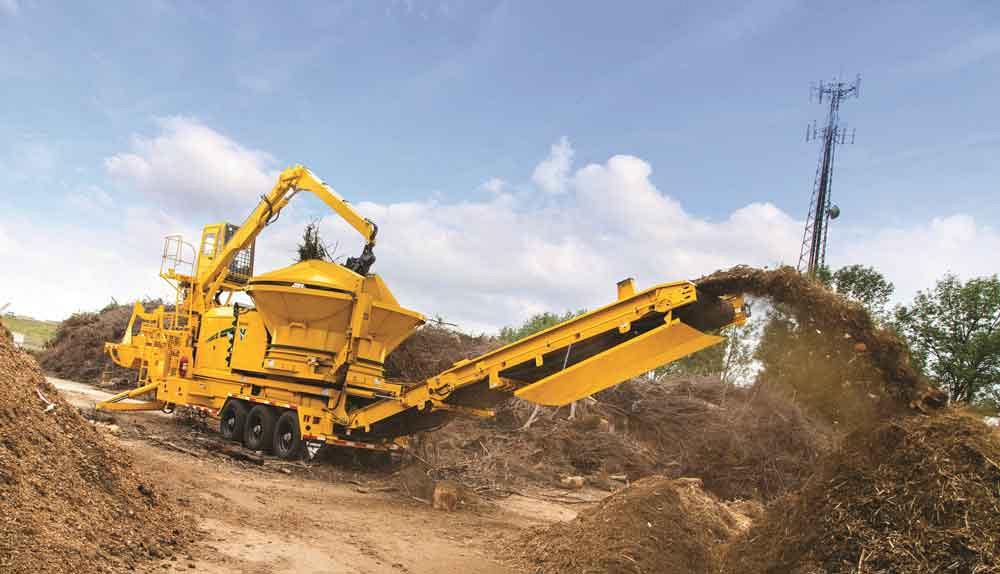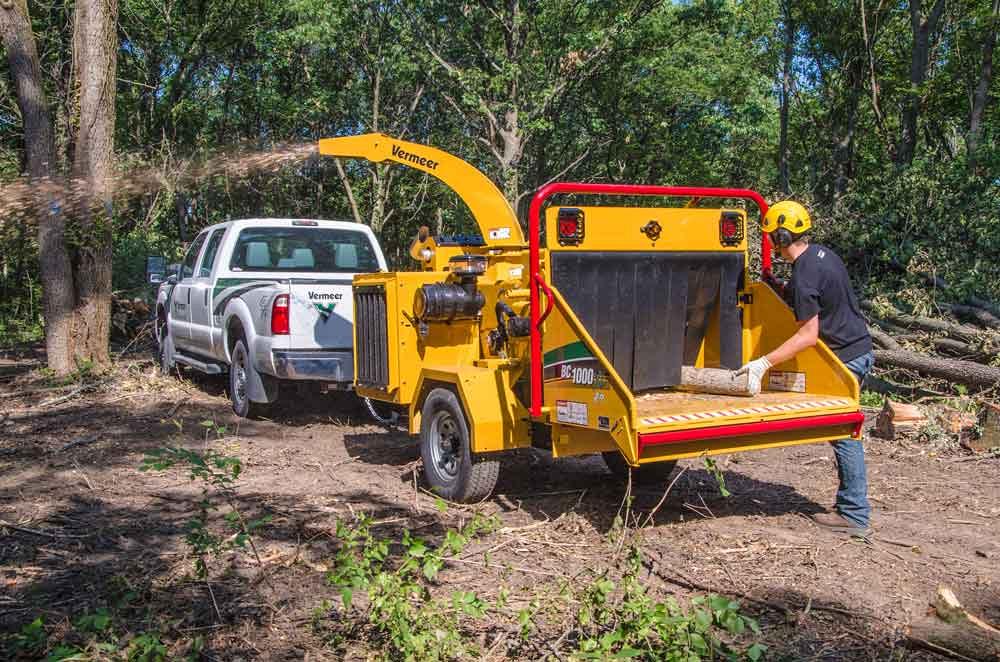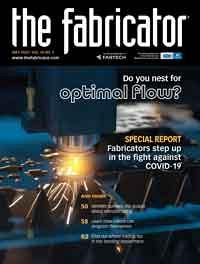Editor-in-Chief
- FMA
- The Fabricator
- FABTECH
- Canadian Metalworking
Categories
- Additive Manufacturing
- Aluminum Welding
- Arc Welding
- Assembly and Joining
- Automation and Robotics
- Bending and Forming
- Consumables
- Cutting and Weld Prep
- Electric Vehicles
- En Español
- Finishing
- Hydroforming
- Laser Cutting
- Laser Welding
- Machining
- Manufacturing Software
- Materials Handling
- Metals/Materials
- Oxyfuel Cutting
- Plasma Cutting
- Power Tools
- Punching and Other Holemaking
- Roll Forming
- Safety
- Sawing
- Shearing
- Shop Management
- Testing and Measuring
- Tube and Pipe Fabrication
- Tube and Pipe Production
- Waterjet Cutting
Industry Directory
Webcasts
Podcasts
FAB 40
Advertise
Subscribe
Account Login
Search
For high productivity in plate rolling, it helps to have latest technology
New plate rollers have definitely changed the dynamic in the forming areas of metal fabricators
- By Dan Davis
- June 1, 2020
- Article
- Bending and Forming

This is one of the two Haeusler EVO plate rolling machines that Vermeer purchased at the end of 2019. Images provided
A tub grinder doesn’t sound as imposing as it actually is. If you work in landscaping or the forestry industry and deal with wood waste, you have a better idea of what it does.
You see, a TG7000 tub grinder made by Pella, Iowa-based Vermeer Corporation takes the stumps, limbs, and trunks of trees and grinds them into mulch. But this isn’t an ordinary wood chipper where a crew stands beside the chipper and shoves one item at a time into the machine. This equipment, which a semitruck hauls into position, has an optional loader for grabbing a large pile of tree refuse and dropping it into the grinder that has a cutting system comprising 10 hammers and 20 double-bolt cutter blocks. That heavy-duty grinder makes mulch out of the tree remnants, depositing the ground-up wood into another pile via a conveyor. With the operator cab in place, the tub grinder is almost 19 ft. tall and can be just over 62 ft. long when the conveyor is fully unfolded. This isn’t pulp fiction; it’s a large machine that makes the job of clearing land and processing wood waste a lot easier than if it had to be done with less equipment.
In this case, big may be better for the person making mulch, but it also can be a challenge to fabricate that equipment. After more than 70 years of manufacturing agricultural and industrial machinery, Vermeer has a good idea of how to do it. But in the spirit of company founder Gary Vermeer, who opened up his small shop in 1948, the company is always looking for a better way to do things. They have found one when it comes to making cylinders and cones for machinery like the company’s tub grinders and other industrial equipment.
The Old Rolling Process
Vermeer has been rolling plate since the 1970s. It’s a manufacturing necessity for many of the company’s products, not just tub grinders. Rolled parts are also found in products like brush chippers.
But as other manufacturers know all too well, older plate rolling machines are only as effective as the operators guiding the process. It takes special attention and a patient approach to ensure that the plate isn’t rolled too tight, pretty much guaranteeing the whole workpiece is headed to the scrap bin.
Take, for instance, an older three-roll plate rolling machine that was once used in Vermeer’s Plant No. 4. The equipment’s controls were pretty basic, adjusting the bottom plate rolls to assist in the forming action and a button to roll the plate in or out.
The machine also had a control system that couldn’t store job programs. Every job had to be created from scratch.
Vermeer had a four-roll plate roller in Plant No. 3 that was slightly larger and had a PLC-based control system, meaning it could hold about eight jobs at a time. But, like its three-roll plate roller, this machine didn’t give the bending and forming team the control it was looking for. A skilled and experienced hand was needed to deliver the parts that matched design specifications.
“It was hard to train people on those old-style rollers because we weren’t saving programs,” said Cory Plants, a corporate manufacturing engineer at Vermeer. “It was kind of an art to be able to operate those machines.”
The plate rolling machine operators also were dealing with very challenging material. Abrasion-resistant (AR) steel, 0.5 in. and under, was routinely rolled on the three-roll machine, and AR and T-1 steel, up to 0.75 in., was thrown on the four-roll plate roller regularly. To minimize the struggle with these materials designed for toughness and hardness, machining specialist group leader and plate rolling veteran Art Dykstra said the operators always kept a close eye on keeping grain direction consistent from one sheet to the next and making sure that sheets came from the same material lot.

Rolling plate for the feed area of this TG5000 tub grinder from Vermeer Corporation is a lot more efficient with two new plate rolling machines.
Older plate rolling technology also requires that the plate have a narrow unbent flat section on its leading edge so the rolls can pinch it to initiate the forming sequence. Prebending of this leading edge reduces the length of this unbent flat section.
Vermeer was doing this prebending on a press brake. These large blanks, which required more than one person to handle, had to be positioned correctly against the brake’s backgauge and then supported while the bend was occurring. After the prebends were made, the workpieces were moved via carts to the plate rolling machine.
The press brake operation to create the prebends and the associated material handling between the press brakes and plate rolling machines caught the eye of Vermeer manufacturing management. They realized that a lot of bending capacity could be gained if they removed all of the plate that had to be prebent for the plate rollers. One of the ways to do that was with new four-roll plate rolling technology that could use the upper and lower rolls to pinch the plate and perform the prebending inside the machine, no press brake bending required.
The New Rolling Process
Vermeer purchased a Haeusler plate rolling machine in 2013. That machine had CNC technology, so the manufacturing team was excited to learn what the latest edition of the company’s technology would provide. Vermeer reached out to the European Technology Center, a Michigan-based Haeusler sales and service affiliate, for assistance with this technology upgrade.
By the end of 2019, Vermeer had installed two new Haeusler plate rolling machines, one to replace the three-roll machine in Plant No. 4 and another to replace the four-roller in Plant No. 3. The EVO models incorporate artificial intelligence to optimize the bend as it is occurring, according to Haeusler officials.
The machines also have Haeusler’s patent-pending VSA technology that introduces more coordinated movement among the four rollers. More specifically, it allows for the use of two pivot points for each side roll swing-arm fixation. This gives the plate roller the capability to create a wide bending geometry for heavy wall thicknesses or a tight geometry if small diameters are desired.
Dykstra described the operation of the new machines succinctly: “You take your plate, lay it between the two rolls, and slide it until it hits the back roller, like a backstop on a press brake. You push the go button, and you stand back and watch the machine move the rollers to make the part. It’s within tolerance every time.”
He continued, “Your second part matches the first part, and your third part matches the first as well. They all come out the same.”
The machine’s BENDtronic control software addresses all aspects of the bending process. A capacity calculator determines if the workpiece can be bent and if the desired form can be achieved; it figures out the load applied to the machine during the forming cycle and the springback that can be expected. A bend calculator calculates the required positions of the rolls to achieve the desired radius, whether it’s a single-pass job or a more intensive multipass job.
The control software also provides guidance for shapes that go beyond cylinders. It is designed to move the rollers in controlled ways to produce ovals, cones, and even S-shaped forms.
Dykstra said the rolling machine’s ability to deliver a part like a cone without operator intervention has been a big benefit for the entire manufacturing operation. The rolled parts meet the welders’ expectations.
The new plate rollers have definitely changed the dynamic in the forming areas of the plants. Chris McElroy, a corporate software programmer at Vermeer, said he has saved about 200 plate rolling jobs for the equipment, and during the ensuing months he has had to visit the shop floor only a couple times to go over plate rolling programs. Dykstra said he doesn’t get involved with the plate rollers as much because he knows that the operators can handle even the most challenging jobs with the new forming technology at their disposal.
In a way, the new equipment has taken the grind out of fabricating things like tub grinders.
About the Author

Dan Davis
2135 Point Blvd.
Elgin, IL 60123
815-227-8281
Dan Davis is editor-in-chief of The Fabricator, the industry's most widely circulated metal fabricating magazine, and its sister publications, The Tube & Pipe Journal and The Welder. He has been with the publications since April 2002.
Related Companies
subscribe now

The Fabricator is North America's leading magazine for the metal forming and fabricating industry. The magazine delivers the news, technical articles, and case histories that enable fabricators to do their jobs more efficiently. The Fabricator has served the industry since 1970.
start your free subscription- Stay connected from anywhere

Easily access valuable industry resources now with full access to the digital edition of The Fabricator.

Easily access valuable industry resources now with full access to the digital edition of The Welder.

Easily access valuable industry resources now with full access to the digital edition of The Tube and Pipe Journal.
- Podcasting
- Podcast:
- The Fabricator Podcast
- Published:
- 04/16/2024
- Running Time:
- 63:29
In this episode of The Fabricator Podcast, Caleb Chamberlain, co-founder and CEO of OSH Cut, discusses his company’s...
- Industry Events
16th Annual Safety Conference
- April 30 - May 1, 2024
- Elgin,
Pipe and Tube Conference
- May 21 - 22, 2024
- Omaha, NE
World-Class Roll Forming Workshop
- June 5 - 6, 2024
- Louisville, KY
Advanced Laser Application Workshop
- June 25 - 27, 2024
- Novi, MI
































